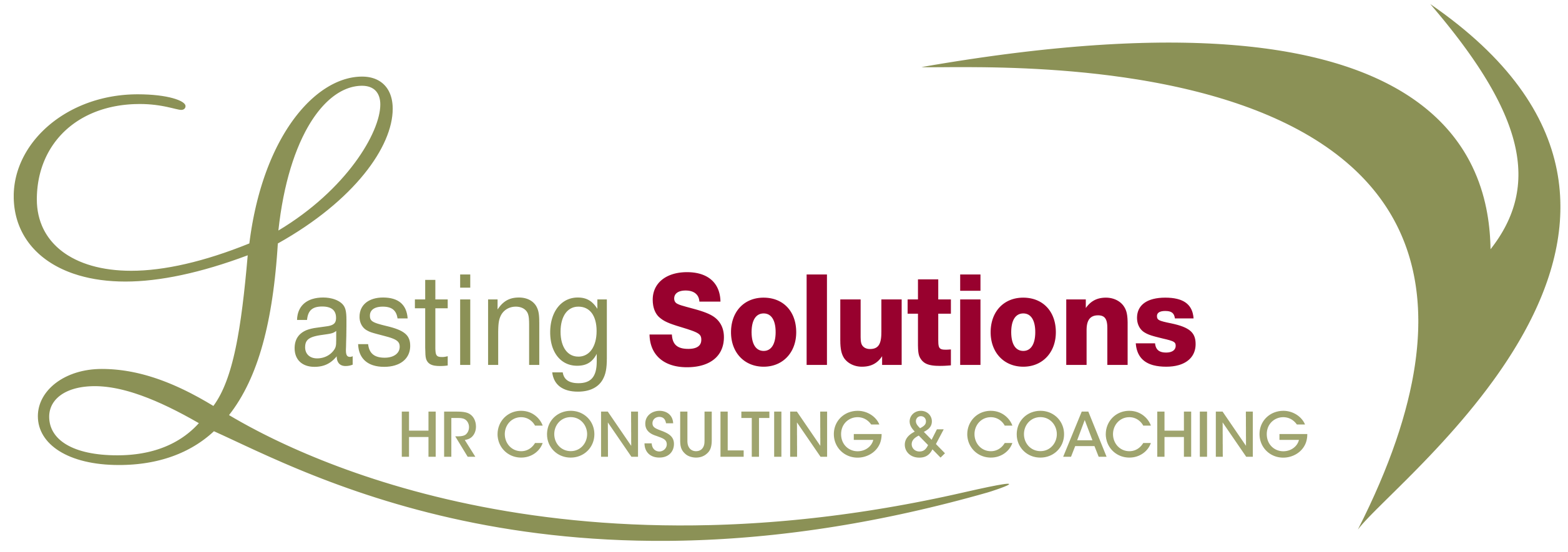Six Top Human Resources Tips
Each year marks change for us as business owners and leaders. We often don’t get enough planning time but it is a crucial aspect of our business success. With the lightning fast pace we live in, global economic impacts and demands and rapid technology shifts, sound Human Resource management is becoming an ever increasing important aspect of our life. Managing your human resources effectively can ensure a successful year ahead. Human Resources has two aspects –tactical and strategic but both with significant importance. Let’s look at each.
Tactical
To remain focused on what’s important, tactical aspects may seem trivial but if not dealt with effectively can cause lost time and frustration down the road. Three areas you should deal with proactively are:
- Addresses
T4’s are around the corner. Ensure employee’s information is up to date to avoid delays after T4’s go out. - Vacation schedule
Although you may not have thoughts of vacation in your head, your employees are already thinking about it. Before the end of January, determine how you will recognize public holidays for the upcoming year, company floater days, shut down periods etc. Publish this to all employees so they can plan their year. By addressing this now, you will avoid headaches down the road. Vacations should be relaxing and enjoyable times, not frustration in planning. If vacation scheduling has been an issue in the past for any reason, consider reviewing and updating your policy around it. If you don’t have one, create one. As your company grows, you will need this to simplify your days. - Policies and Procedures
Having clear policies and procedures becomes more important as your company grows. Typically, in smaller companies policies are created when issues arise. Handling them in a piece by piece manner is unproductive and can cause significant delays when issues do arise. Lost productivity can’t be reclaimed.
By proactively establishing a true business tool for your company that encompasses, policies, procedures, employment relationship factors and total rewards you will take the guess work out of future issues. This will save you time and effort when you need it most. One guide book, well written, will take the guess work out for you, prevent misuse of resources, demonstrate open communication and provide a clear foundation for the employer/employee relationship.
Strategic
The strategic aspects of HR are those areas that really have an impact on your business success. Each one of these elements is a critical aspect of your business and should be given the time and effort they deserve. Once you set them up with proper procedures and timing, ensuring direct linkages to your business, you can put them on autopilot and refer to them at relevant intervals during your business cycle. Like any strategic aspect of your business, these areas should not be left to chance. Being reactive is much more difficult than being proactive. Important strategic aspects are:
- Align people to the business objectives
All of the business goals and strategies should channel down from the highest level. Typically, this is done by developing goals for each role. Employees do much better when they know what’s expected of them and what they do matters to the ultimate goals of the organization. They’re happiest (we all are) when we know what we do makes a difference. Engaged employees are productive employees!
Create specific goals and measure employees against them. If your employees reach their goals, the company will too. This process, also known as performance management is dreaded to so many but shouldn’t be. Performance management when done well, helps you identify your leaders, compensate people properly, assists in succession planning and in some cases determine objectively, who isn’t a “keeper”.
For more on performance management, please visit my website www.hrcareertransition.com / Free Resources / Why Performance Management is Critical to Your Positive Business Performance. - Develop leaders and succession plans
What does this mean for your organization? Everyone can be a leader. A true leader takes accountability for everything they do in their lives. This type of thought process does wonders in any organization. Demonstrate this from the top down, with open, honest communication with feedback methods and your true leaders will emerge. Your leaders are your future. Building capacity in your company is paramount. Once you know who your leaders are, create succession plans to keep the company robust. Skills shortages are emerging quickly all around us and losing one key role could leave a significant hole in your organization and without proper plans in place; it could harm your company. - Rewarding key employees
As leaders we typically spend 80% of our time on 20% of our people and it’s not the top 20%. It’s typically the bottom 20% trying to get them up to speed. That means that our top 20% are being ignored and possibly not being rewarded properly. Our top 20% are mobile, have great skills and know with an improving economy they can do better any where else, unless you give them reason to think otherwise. We may not always have money to give our stars but they may not always be looking for it either. Top performers want opportunity and they want to know they make a difference. What can you do to show your key employees they are valued? What’s the risk to your organization if you don’t take the time to do this?
When you take this approach, your strategic HR planning cycle is perfectly aligned with your business -align your people to your business objectives, develop your talent and reward them properly.


Leave a Reply